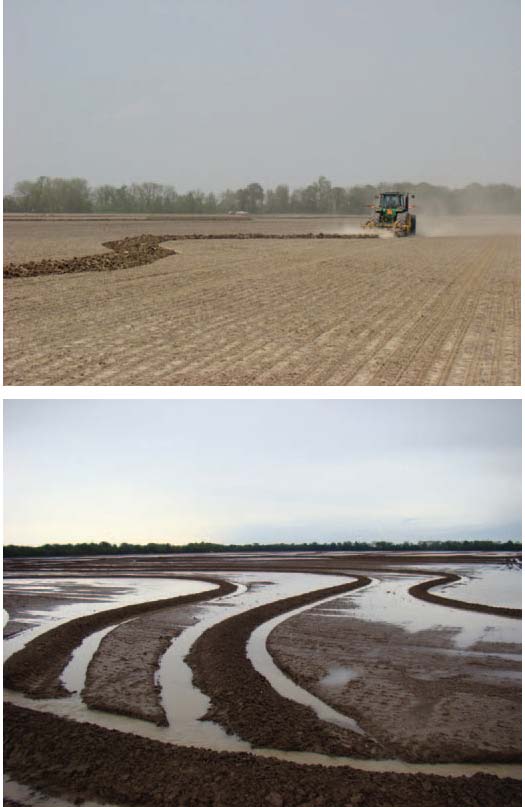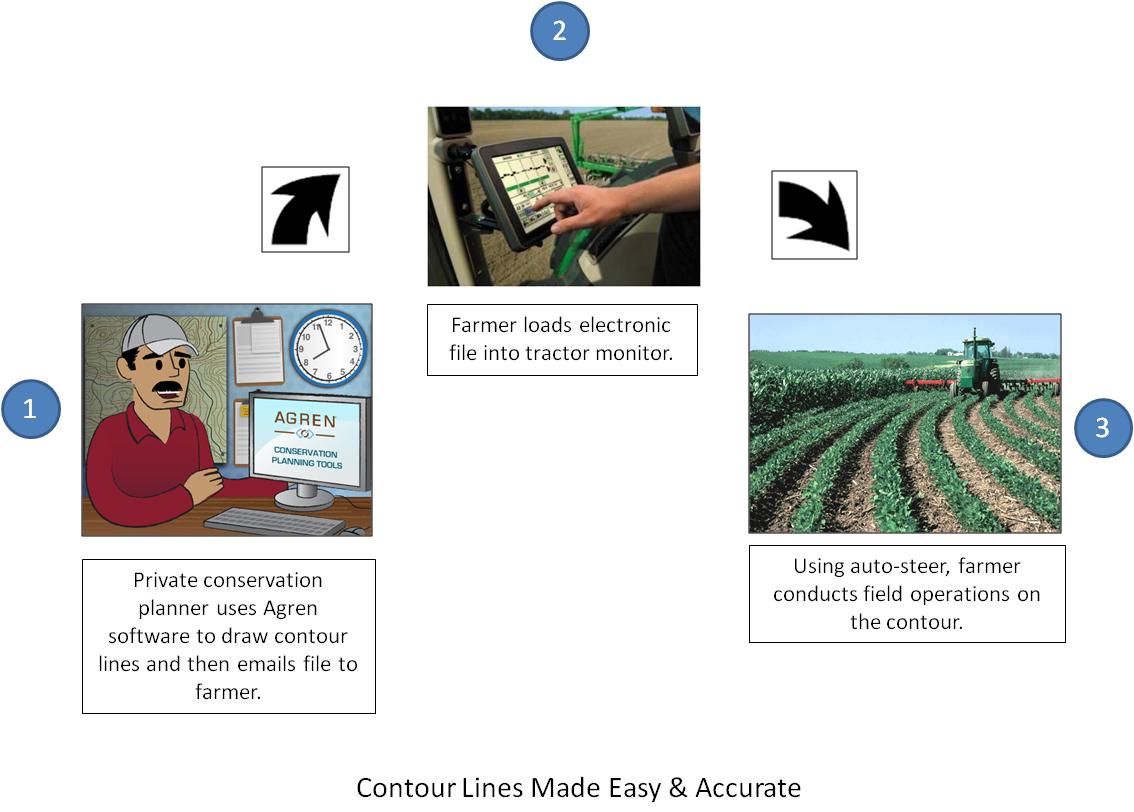Sometimes it is the simple things that can make a big difference. Take contouring, for example. It’s easy; so easy in fact that we often overlook it when we consider it in the context of conservation technology. I staked a lot of contour lines for farmers when I was a NRCS Soil Conservationist in the 1980’s. It was easy; just me, my hand level, and a fist full of flags. But it was also time consuming. It took hours to stake 160 acres of cropland, especially when I tried to minimize point rows.
Today, my local conservation district no longer assists farmers in staking contour lines, partly because farmers don’t ask for assistance. But maybe it’s because conservation technicians don’t think it is necessary, or don’t have the time.
Very few farmers have the ability to plant on a good contour without some guidance – just like in the ‘80s. I think we assume that farmers don’t contour because their equipment is too big. While this may be part of the reason, I don’t think it illustrates the entire picture. Another factor may be the lack technical assistance. If this is a real barrier, let’s think how we can use technology to streamline the simple process of laying out contour lines.
Conservation technology offers the best opportunity for conservation planning to be integrated with production agriculture. “Gone are the days when many farmers saw conservation as an impediment to production,” says precision agriculture consultant Ron Farrell. “Going forward, conservation—especially nutrient management—will be an integral part of precision agriculture.” Farrell helped found the Precision Ag Council of AgGateway and remains an advisor to the nonprofit consortium that helps develop industry standards and guidelines for precision agriculture. He believes conservation and production will fit hand and glove, in part because nutrients and soil lost to streams or lakes are wasteful. He sees an accelerating shift towards environmental sustainability with ever more precise, yet ecosystem-driven, production prescriptions.
Farrell believes water management will soon be the most important issue facing agriculture, while managing surface water runoff will follow closely. Keys to both water availability and water quality will be more precise application of inputs and preventing the movement of soil and water offsite. Farmers will be looking for the tools that help accomplish those two tasks, he predicts.
An example of applying conservation using today’s technology is with contours. It can be as easy as one, two, three. A resource conservationist could generate an electronic version of contour lines and then email the electronic file to the farmer. The farmer could then upload the contour lines into the automated steering program and plant accordingly. This would be a huge increase in efficiency, saving both time and money. There is no traveling to the field to stake a contour line or contour buffer strip. Additionally, the ease of using such a system for creating contours would significantly improve the farmer’s willingness to implement these critical conservation practices.
Chris van der Loo, market manager for Trimble’s Agriculture Division, says his company is already providing precision electronic files to customers. He says, “In rice growing regions, Trimble is providing farmers with a guidance line, smoothed to the contour, based upon a topographic map. This is then transferred to the in-field display and can be used with an automated steering solution, enabling farmers to more efficiently install rice levees. For conservation purposes, this same technology can also be used for planting on the contour.” This new way of doing business—this new conservation technology that integrates conservation with precision agriculture— would help farmers put more conservation on the ground.

To me, the challenge is obvious. Let’s not leave the simple and inexpensive practices behind as we move forward with technology. We can, and should, integrate the simple practices with precision conservation.
Excerpted with permission from Opportunity now: Integrate conservation with precision agriculture, by Tom Buman. Available from the Journal of Soil and Water Conservation 68(4):96A-98A. Copyright © 2013 Soil and Water Conservation Society.
